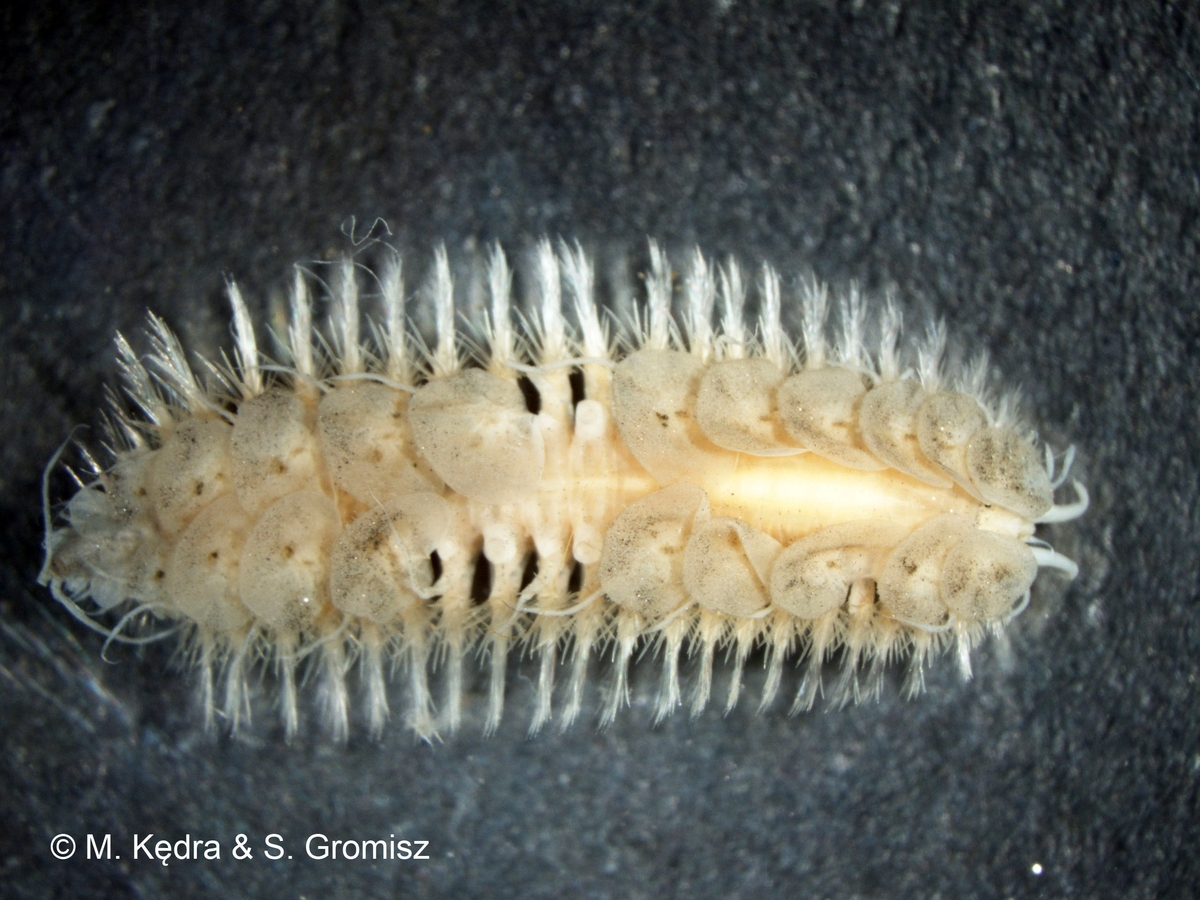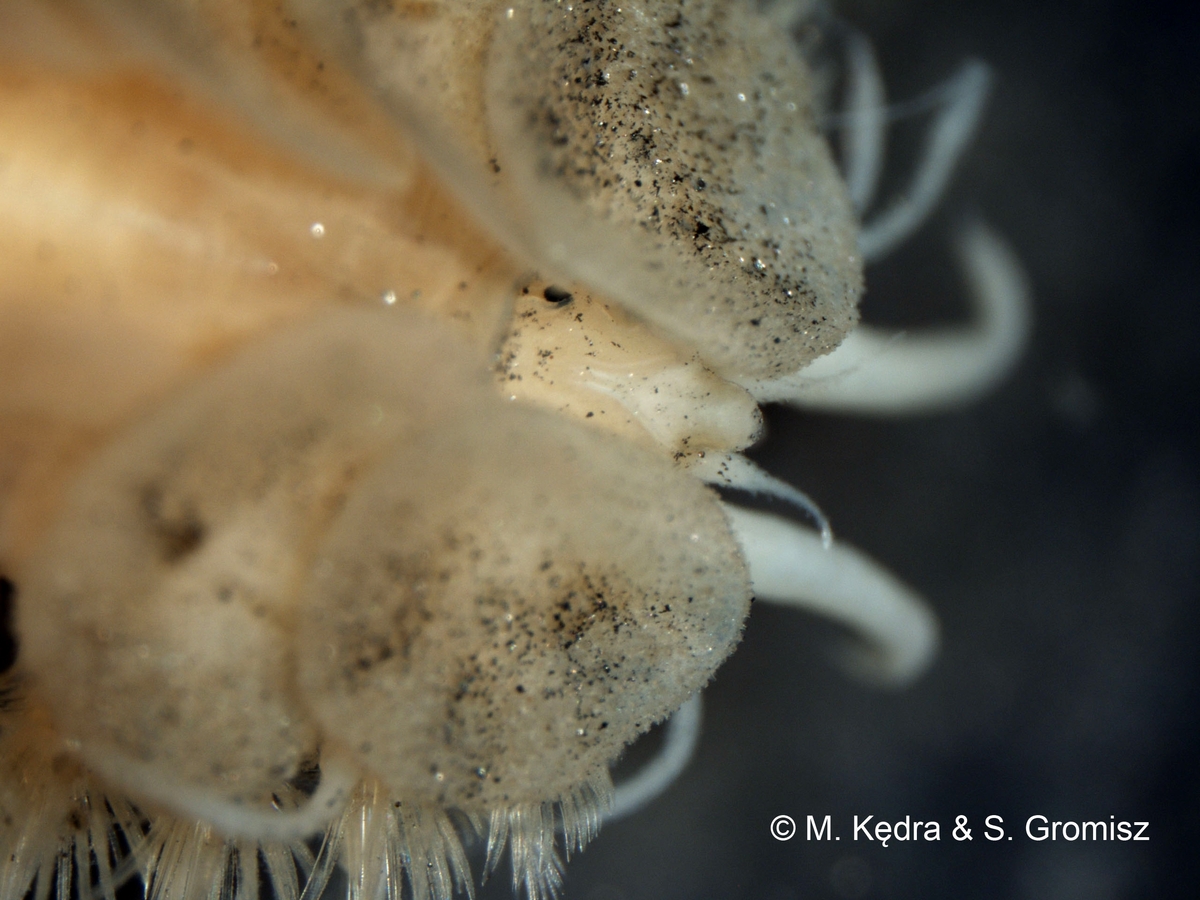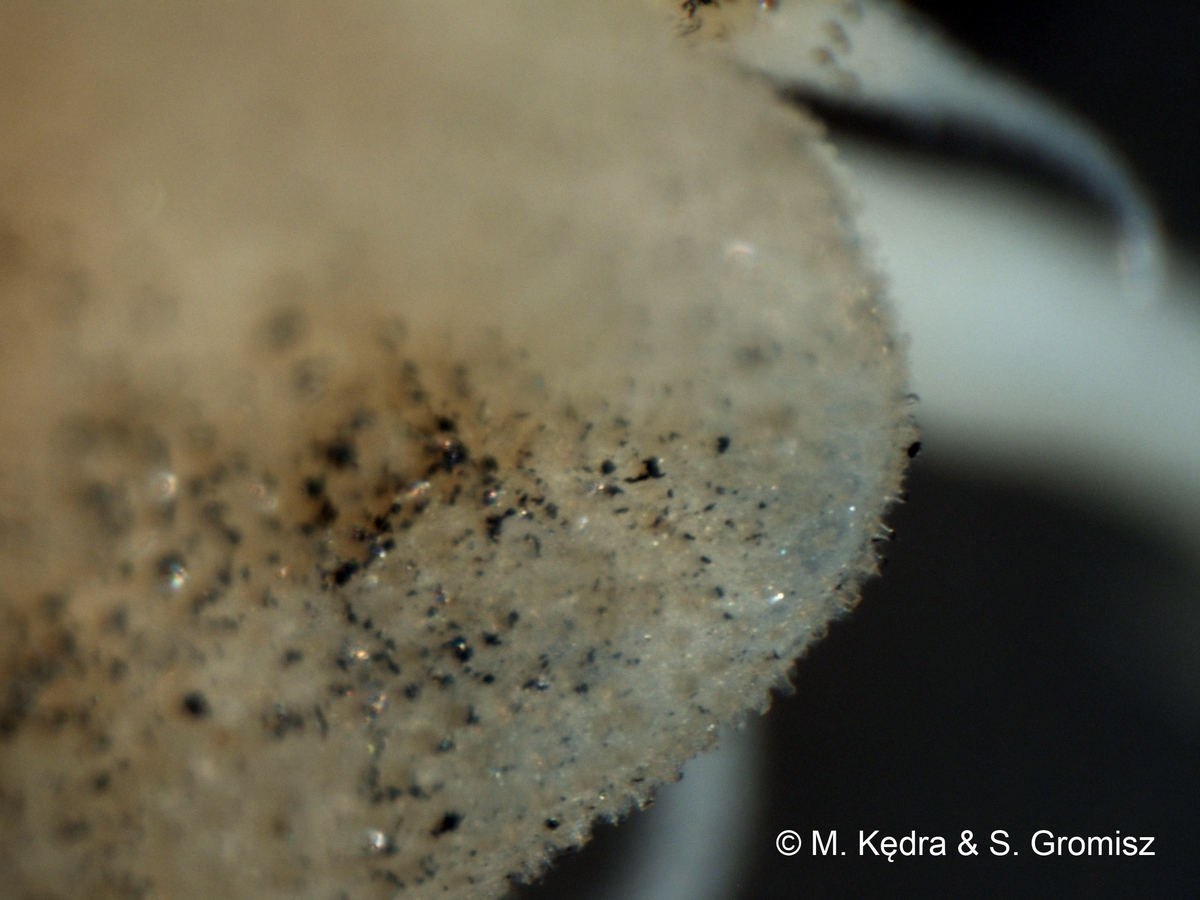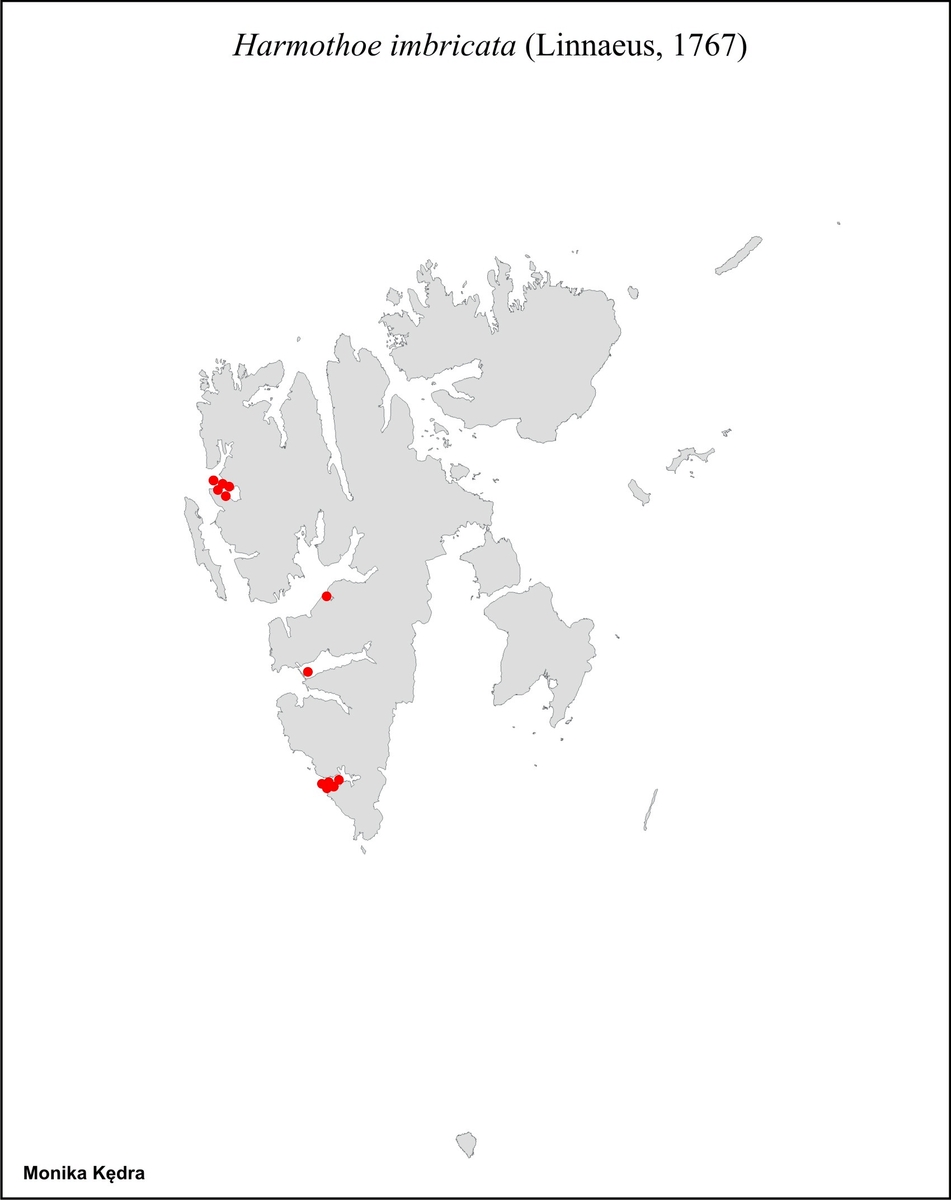Harmothoe imbricata (Linnaeus, 1767)

|

|

|

|
Aphrodita imbricata Linnaeus, 1767
Polynoe imbricata Johnston, 1827
Polynoe cirrata Johnston, 1839
Lepidonotus cirratus Johnston, 1865
Polynoe imbricata Hornell, 1891
Harmothoe imbricata McIntosh, 1900
Distinguishing characteristics
Prostomium bilobed, with a peak on each lobe, lateral antennae ventrally inserted.
Anterior pair of eyes near the prostomial peaks.
Neuropodial chaetae spinose with bidentate tips.
Characteristic scales.
Species description
A scale-worm with a body of uniform width. 39 chaetigers. Prostomium bilobed, with a peak on each lobe, a median antenna, a pair of lateral antennae, ventrally inserted, and a pair of palps. 2 pairs of eyes, anterior pair near the prostomial peaks, posterior pair near the rear margin. Peristomium bearing chaetae and a pair of dorsal and ventral tentacular cirri. Scales overlap, covering the body. First pair of scales round, the rest oval to kidney-shaped, about a quarter of the margins fringed with small papillae, surfaces with small tubercles and sometimes a row of more distinct tubercles on the outer border. Notopodial chaetae spinose with blunt tips. Neuropodial chaetae spinose with bidentate tips, a few in upper and lower positions with unidentate tips. Pygidium with dorsal anus and a pair of anal cirri.
Size
Up to 65 mm for 39 chaetigers.
Color
From yellow to black, with plain or patterned scales.
Habitat
Littoral on rocky shores. Sublittoral to 230 m on varied bottoms. Sometimes found in tubes of other polychaetes. Has been recorded from brackish water in estuaries.
Mobility
Mobile.
Feeding
Carnivore. Omnivorous, feeding on small animals, sea-grasses and diatoms.
Life cycle
Spawing occurs in March and April off north-east England, and the eggs are brooded under the scales. Brooding on the outside of the body with release of planktotrophic larvae.
Distribution
Northern hemisphere, whole North Sea, Skagerrak, Kattegat, Öresund, Belts and Baltic Sea to southern Finland.

